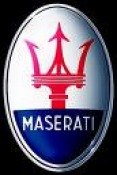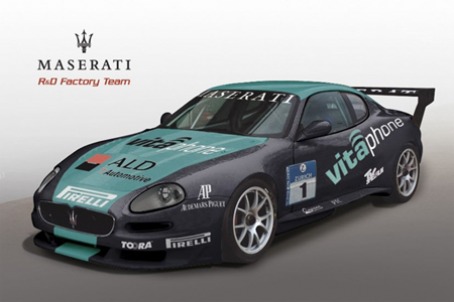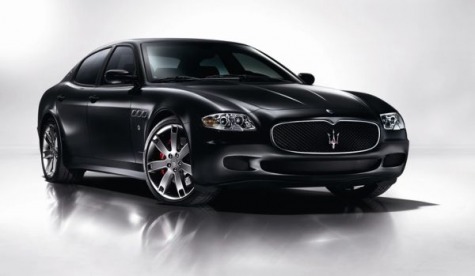Maserati:From Beginning To Today

The Beginning
Seven sons were born to Rodolfo Maserati and his wife, Carolina Losi, in Voghera, Italy. The oldest, Carlo, was born in 1881. The youngest was born in 1898. All of the brothers loved cars, engineering and design, except Mario, who was born in 1890. He became a painter and its probable that the created the Maserati logo, the Trident.
The first of the Maserati brothers to work with engines was Carlo. He worked in Affori, which is close to Milan, in a bicycle factory. While there, he designed a single engine for a velocipede. It was later produced in the motorcycle plant of Marchese Carcano di Anzano de Parco. Carlo used the engine he designed to equip racing bicycles. He set a record in 1900, when he rode 50 kilometers per hour (31 miles per hour.) When Carcano closed its doors in 1901, Carlo went to Fiat. In 1903, he left Fiat to work as a mechanic and test driver for Isotta Fraschini. He talked the Company into hiring his sixteen-year-old brother, Alfeiri.
Carlo's career was brilliant. By the time he died at age 29, he had raced for Bianchi, served as General Manager of Junior and opened a workshop with his brother, Ettore. The two brothers build electric transformers for both high and low voltage cars. Shortly after Carlo's death, brother Alfieri, who had a similar personality and skills, took Carlo's place as driver and technician. In 1908, he placed 14th in Dieppe at the Grand Prix for Voiturettes, even though the car that Isotto loaned him had a carburetor breakdown.
Brothers Binde and Ettore were by this time working at Isotta Fraschini. Alfieri was promoted to the customer service sector in Bologna by 1912. The experience he gained there encouraged him to start his own business. He wanted to use his knowledge, creativity, talent and skill to their fullest potential.
Alfieri rented space in Bologna's historical district at Via de Pepoli in 1914. It became the first headquarters of Maserati.
Maserati 1914 to 1937
When WWI ended, Alfieri moved Maserati's offices to Bologna's suburbs. The Brothers main business was tuning cars for Isotta Fraschini, though they did work on other automobiles. Alfieri got into racing shortly thereafter and proved his worth by winning the Mugello Circuit, the Susa-Moncenisio and the Aosta-Great Saint Bernard. Much to his chagrin, he was disqualified for replacing a 2-liter engine with a 3-liter. The disqualification was imposed for five years, but was lifted after a few months.
While he was away from the racing circuit, Alfieri concentrated on the Maserati shop. He built the Tipo 26 in 1926. The first Maserati was born and it sported the Trident logo. The car, driven by Alfieri won the Targa Florio in its debut race.
Wins
In 1927, Alfieri took 3rd place with the Maserati at the Targa Florio. He then entered the Tipo 26B in the Messina Cup, where he was in a serious accident. This didn't stop Maserati from winning the Italian Constructor's Championship.
The V4
In 1929, the V4, which had a 16-cylinder engine, made its debut at the Italian Grand Prix. In Cremona, it set the world Class C speed record with Baconin Borzacchinni at the wheel. It ran 10 kilometers at 246.069 kilometers per hour. This record enhanced the Maserati image. This provided an influx of finances that permitted Maserati to expand.
Baconin Borzacchinni took the wheel of the Maserati V4 again in 1930. He won the first full victory for the Company at the Grand Prix in Tripoli.
Alfieri Maserati's Last Cars
The 8C 2500 with front-wheel drive and the 4CTR were the last cars to be designed by Alfieri Maserati. He died on March 3, 1932. His funeral was held in Bologna and was attended by a huge crowd that included people from all walks of life. They included racing drivers and the employees of the Maserati plant. Everyone wanted to pay their final respects to a great man.
Maserati Forges Ahead
Though Alfieri's death was a setback for Maserati, the remaining brothers were determined to continue with the business and make it a success. Bindo left Isotta Fraschini. He returned to Bologna, where he, Ernesto and Ettore concentrated on the business that Alfieri had founded. The brothers developed a 3-liter, 8-cylinder engine. Maserati's activities in the racing world continued.
The Maserati Team
Tazio Nuvolari joined the Maserati team in 1933. He brought with him the ability to fine-tune the chassis of Maserati cars and adapt it to the new engine. He won the Grand Prix at Belgium, Nice and Montenero.
Competition
At this time Auto Union and Mercedes-Benz entered the racing scene. Maserati had stiff competition and their wins declined. The Company continued to win lesser races and the Maserati Brothers focused on this area. In 1936, Gino Rovere invested heavily in Maserati. He appointed Nino Farina as Chairman. The 6 CM debuted and Maserati gained a competitive edge in the voiturette class.
Maserati 1937 to 1967
The Maserati Brothers sold all interest in the Company to the Orsi family in 1937. The Company was then relocated to Modena. This would later become the headquarters for Viale Ci. The Brothers continued to work as chief engineers at Modeno until 1948. Despite the strong competition from Mercedes-Benz, Maserati once again dominated at the track.
Maserati, with Wilbur Shaw at the wheel, won a great victory at the Indianapolis 500 on May 30, 1939. The win was repeated in 1940.
The War Years
Maserati, like most other car manufacturers, adapted production during WWII. They produced electrical components, electric vehicles, machine tools and spark plugs. When the war ended, the Company once again began to build cars. At this time, the A6 1500 debuted.
Modena
The A6 GCS, with Alberto Ascari at the wheel, was highly successful on the Modena racing circuit. At the time, Maserati's greatest competitors were Ferrari, Alfetta and Talbot.
Sharper Competition
The competition became sharper for Maserati during the 1950s. Ferrari and Alfo Romeo were its greatest opponents. Gioacchino Colombo became Chief Engineer at Maserati in 1953. He modified the AC GCM. The racing team became stronger when such drivers as Bonetto, Fangio, Gonzalez and Graffenrad joined. The 1953 season saw some great victories for Maserati, including the Italian Grand Prix.
Colombo began to design the Maserati 250F. It was later developed by Alfieri and made its debut in 1954. That same year, Fangio drove it to victory at the Argentine Grand Prix.
In 1957, Maserati announced it would be retiring from the racing circuit. However, the Company never quit producing racecars and prototypes for the private race teams. They supplied engines for Formula 1 racers and developed a 3-valve, 12-cylinder engine with a triple ignition for Cooper in 1965.
Series Production
In 1958, a new era began for Maserati. The plant expanded and Series production and sales became its focus. Racing took a backseat. In 1962, the Sebring was introduced, followed by the Quattroporte the next year. This was also the year that the Maserati 4-door saloon was released. It had a 90-degree V-8 engine. Displacement was 4,136cc.
Maserati 1968 to 1997
The years between 1968 and 1997 were the best of times and the worst of times for Maserati. Production grew rapidly and new models featured novelties that attracted much interest. In 1968, Citroen purchased 100% of Maserati shares from the Orsi family and Aldolfo Orsi remained Honorary Chairman. The first mass produced mid-engine Maserati, the Bora, was designed by Giugiaro and debuted at the Geneva Motor Show in 1971. Maserati produced a new racing engine that was installed in the Citroen SM. It was victorious at the Rally of Monoco.
Crisis at Maserati
The Yom Kippur War in 1973 sparked an oil crisis that created big problems for Maserati. The crisis worsened and Citroen announced on May 23rd that Maserati was in liquidation. The government intervened and Maserati was under control of the GEPI, which was an agency that assisted companies in dire financial straits in order to sustain jobs.
On August 8, 1975, Benelli purchased a majority of Maserati's shares. A former racing driver by the name of De Tomaso became Managing Director. Under his leadership, the Company began to climb back onto firm ground, though its growth was greatly decreased. By 1976, Tomaso had released the Kyalami. Shortly after the Turin Motor Show, the Quattroporte III was introduced. By the beginning of 1977, Maserati was producing a significant amount of cars.
A New Era
In 1993, Fiat Auto purchased 100% of Maserati's shares. They sold the shares to Ferrari in 1997. A new era of Maserati had begun.
Later that year, the plant in Madeno was closed while the assembly line was revamped for the production of the 3200 GT. The car was introduced to the public at the Paris Motor Show in 1998. Maserati was soon producing over 2,000 cars annually.
In 1999 at the Frankfurt Motor Show, the Spyder debuted. Maserati announced at that time that they would be returning to the North American market. In 2002, the Coupe made its appearance at the Detroit Motor Show. Maserati produced high class and sophisticated cars upon its return to the North American market. The Company was transferred from Ferrari to Fiat in 2005.
Today
In today's automotive market, Maserati is the symbol of elegance, prestige and luxury. The Company and the cars it produces embody a distinct Italian style. It has a tradition of success on the racing circuit and gives off the aura of superior craftsmanship, sophistication and world-class technology. The cars and the Trident emblem are a symbol of history and prestige. Who could ask for more?
The Maserati Quattroporte Sport GT has been named "Best of the Best" in the sedan category by the American luxury lifestyle magazine Robb Report. The Italian car was chosen in the annual rankings over the Bentley Continental Flying Spur, the Audi S8, the BMW M5 and the Mayback 57Sc, a statement from the Italian carmaker announced. Robb Report said the Quattroporte, Italian for four doors, was "a styling masterpiece. The unpretentious Pininfarina shape will continue to turn heads when other sedans have become yesterday's styling fad. "It is these concours-winning looks, underpinned by performance and fit and finish that are world-class, which make the Quattroporte Sport GT our favorite new sedan". The Maserati Quattroporte is the first car ever to be named Best of the Best twice. The first time was in 2004, the year the luxury sedan was introduced to the market as the first vehicle engineered by the Ferrari-Maserati partnership. Maserati has since been moved from Ferrari to Alfa Romeo by parent company Fiat. The complete list of Best of the Best winners appears in the June edition of the Robb Report, which specialises in the world's finest luxury products and services. Aside from automobiles, Best of the Best recognition, now in its 18th year, is given to yachts, jewelry, holidays, wine, fashion and other luxury items.

Maserati Racing

